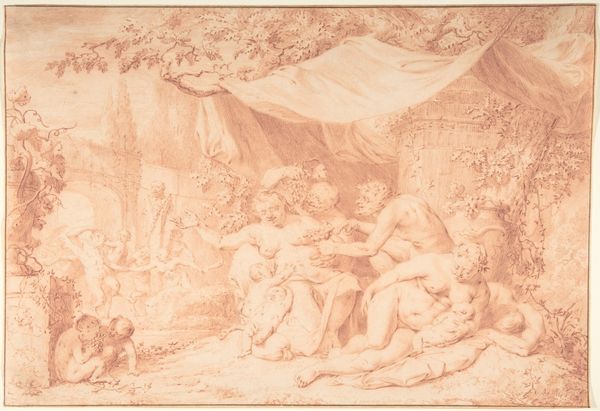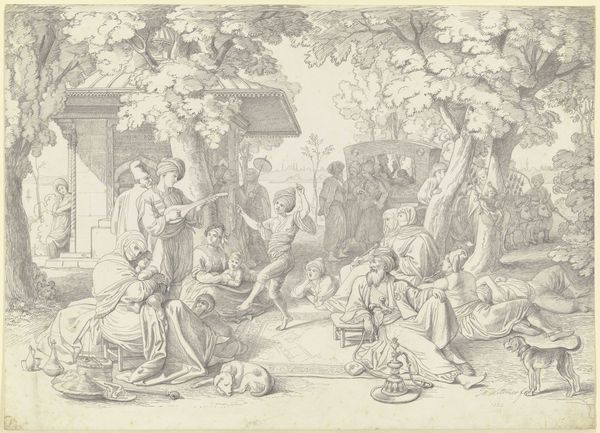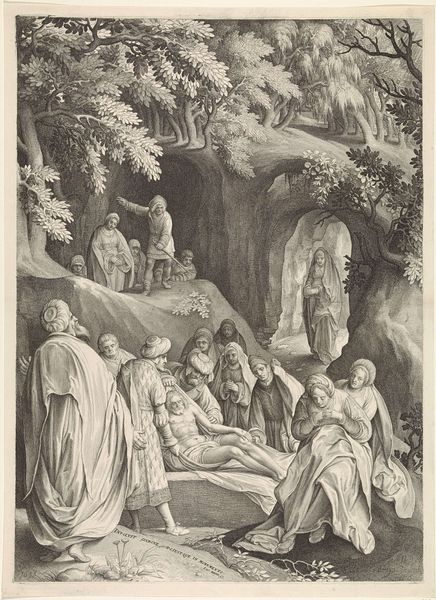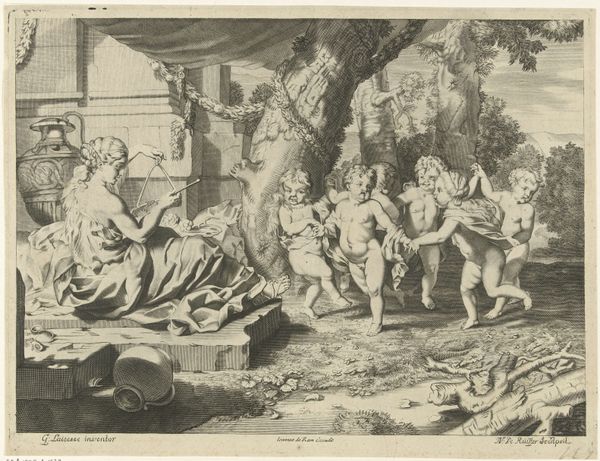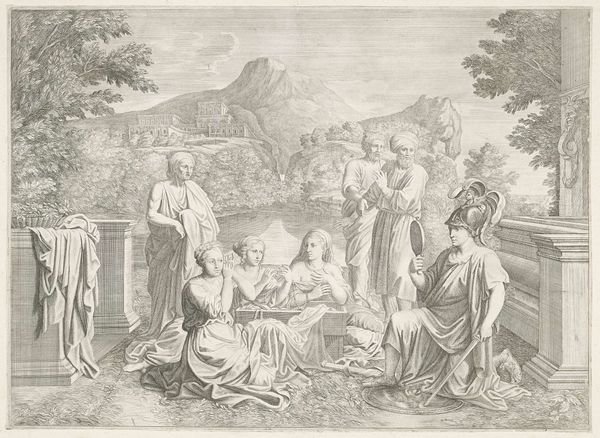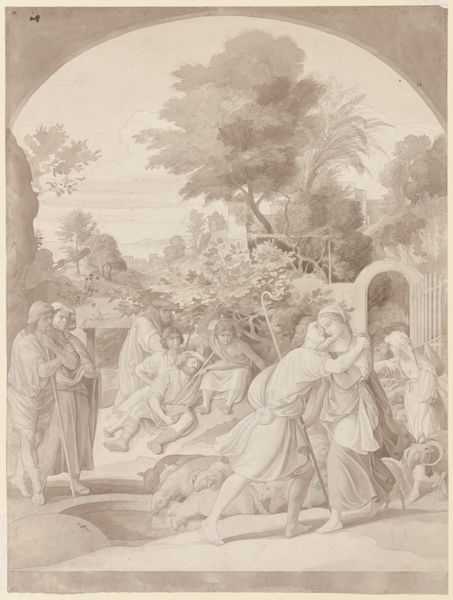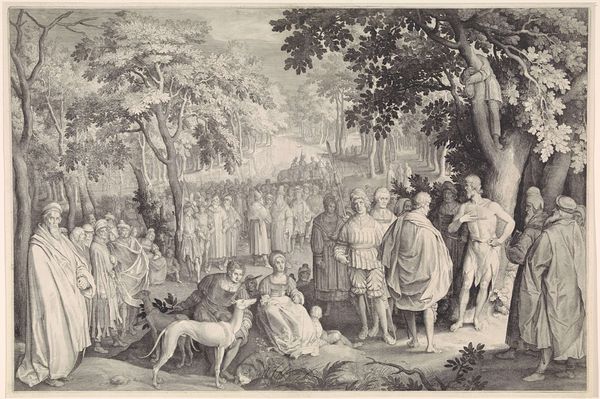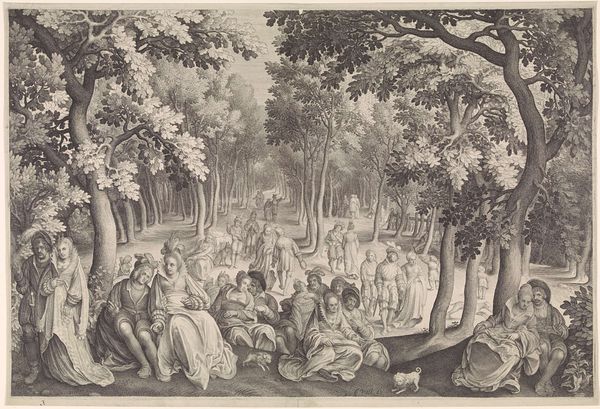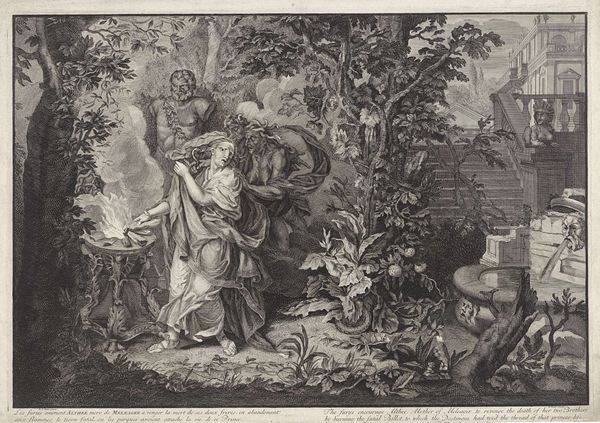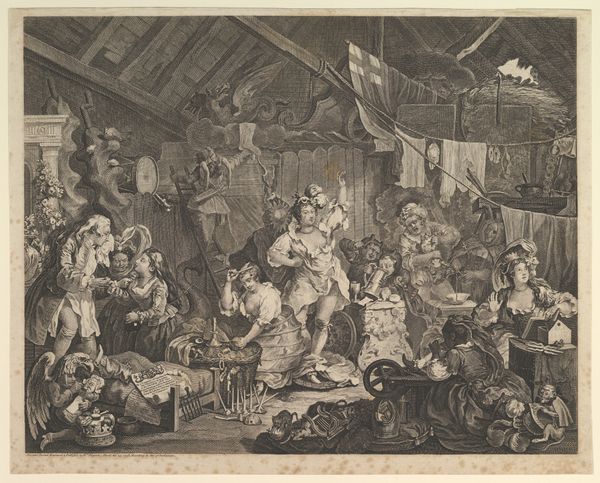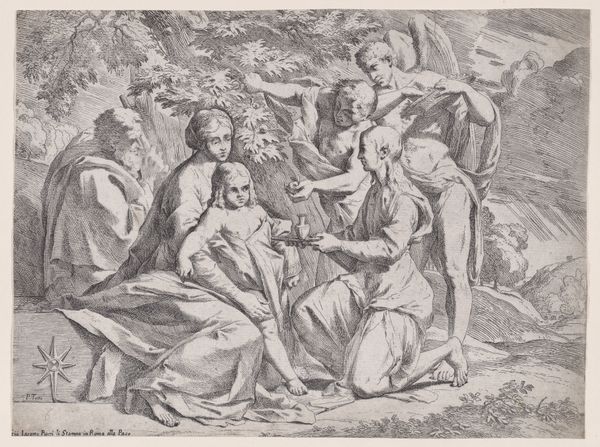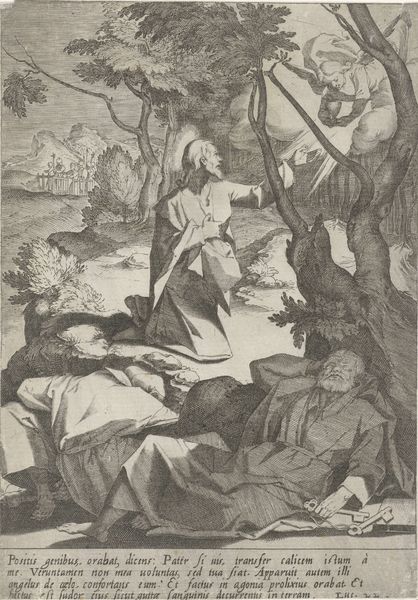
The Pool of Bethesda (St. John, Chapter 5) 1767 - 1777
0:00
0:00
drawing, print, engraving
#
drawing
# print
#
landscape
#
figuration
#
men
#
history-painting
#
engraving
#
angel
#
christ
Dimensions: Plate: 18 9/16 x 23 1/4 in. (47.2 x 59 cm)
Copyright: Public Domain
Curator: Simon Francis Ravenet, the elder created this print titled "The Pool of Bethesda," sometime between 1767 and 1777. It’s currently part of the collection here at the Met. Editor: Right, first thought—it's strangely calming, for a scene depicting illness and miraculous healing. It’s like a classical idyll…with a biblical twist. The tonal range achieves something of a peaceful visual harmony. Curator: Peace maybe before the storm, I mean, before the divine intervention, wouldn't you say? There’s a story packed into this composition. You have Christ at the left and the descending angel which will stir the waters on the right, an act necessary to imbue it with healing power. Editor: Semiotically, this organization suggests a spatial tension. The horizontal orientation emphasizes breadth rather than depth and further diffuses a compositional unity. Are we meant to draw a hard distinction between Christ’s passive intervention and the kinetic agency of the angel? Curator: Maybe it's more about contrasting ways of bringing solace, right? Christ’s quiet presence against the angel’s dynamism. He has come from somewhere else, while these ordinary sick folk exist here. And Ravenet's used engraving to capture the subtlety of light across all the figures. What’s really moving to me, and what often goes missed in its purely biblical interpretation, is just the humanity – people wanting to get better. Editor: Yes, the texture achieved is particularly noteworthy here and emphasizes both dimension and an overall flattening of form. Observe, for example, how Ravenet constructs tonal contrast in the musculature of the figures near the pool's edge as compared with the planar affectations of the dog and child who remain relatively unaffected. Curator: I see it. He balances it so elegantly—drawing our attention across suffering and hope and into daily, familial life at once. It feels inclusive and intimate somehow. And there is no other place I would prefer to draw from, creatively speaking. Editor: So true—this piece asks us to reconsider our readings of human drama, be they spiritual, physical, or both. Thanks, Simon. Curator: Thank YOU, always insightful.
Comments
No comments
Be the first to comment and join the conversation on the ultimate creative platform.
